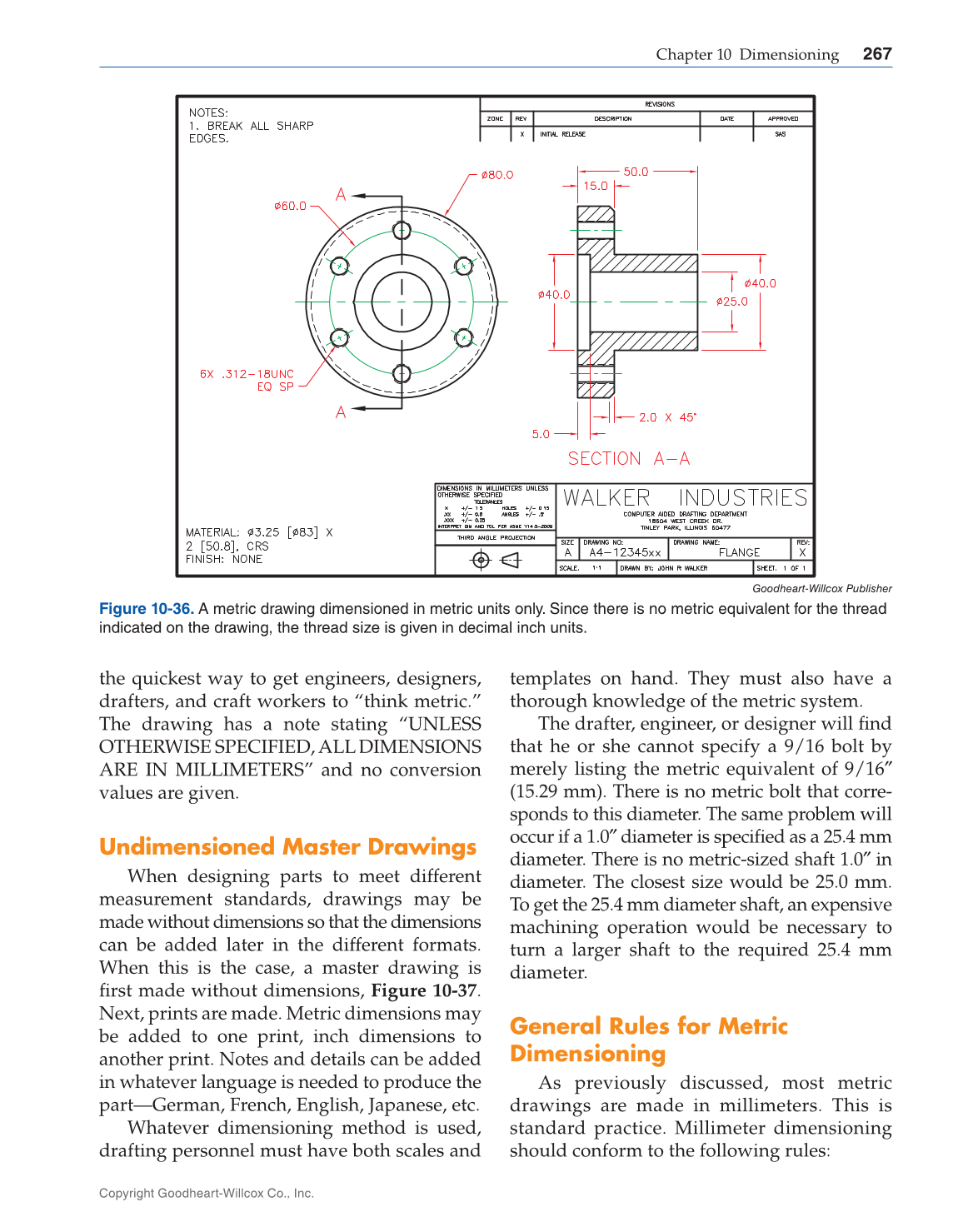Chapter 10 Dimensioning
267
templates on hand. They must also have a
thorough knowledge of the metric system.
The drafter, engineer, or designer will fi nd
that he or she cannot specify a 9/16 bolt by
merely listing the metric equivalent of 9/16″
(15.29 mm). There is no metric bolt that corre-
sponds to this diameter. The same problem will
occur if a 1.0″ diameter is specifi ed as a 25.4 mm
diameter. There is no metric-sized shaft 1.0″ in
diameter. The closest size would be 25.0 mm.
To get the 25.4 mm diameter shaft, an expensive
machining operation would be necessary to
turn a larger shaft to the required 25.4 mm
diameter.
General Rules for Metric
Dimensioning
As previously discussed, most metric
drawings are made in millimeters. This is
standard practice. Millimeter dimensioning
should conform to the following rules:
the quickest way to get engineers, designers,
drafters, and craft workers to “think metric.”
The drawing has a note stating “UNLESS
OTHERWISE SPECIFIED, ALL DIMENSIONS
ARE IN MILLIMETERS” and no conversion
values are given.
Undimensioned Master Drawings
When designing parts to meet different
measurement standards, drawings may be
made without dimensions so that the dimensions
can be added later in the different formats.
When this is the case, a master drawing is
fi rst made without dimensions, Figure 10-37.
Next, prints are made. Metric dimensions may
be added to one print, inch dimensions to
another print. Notes and details can be added
in whatever language is needed to produce the
part—German, French, English, Japanese, etc.
Whatever dimensioning method is used,
drafting personnel must have both scales and
Goodheart-Willcox Publisher
Figure 10-36. A metric drawing dimensioned in metric units only. Since there is no metric equivalent for the thread
indicated on the drawing, the thread size is given in decimal inch units.
Copyright Goodheart-Willcox Co., Inc.
